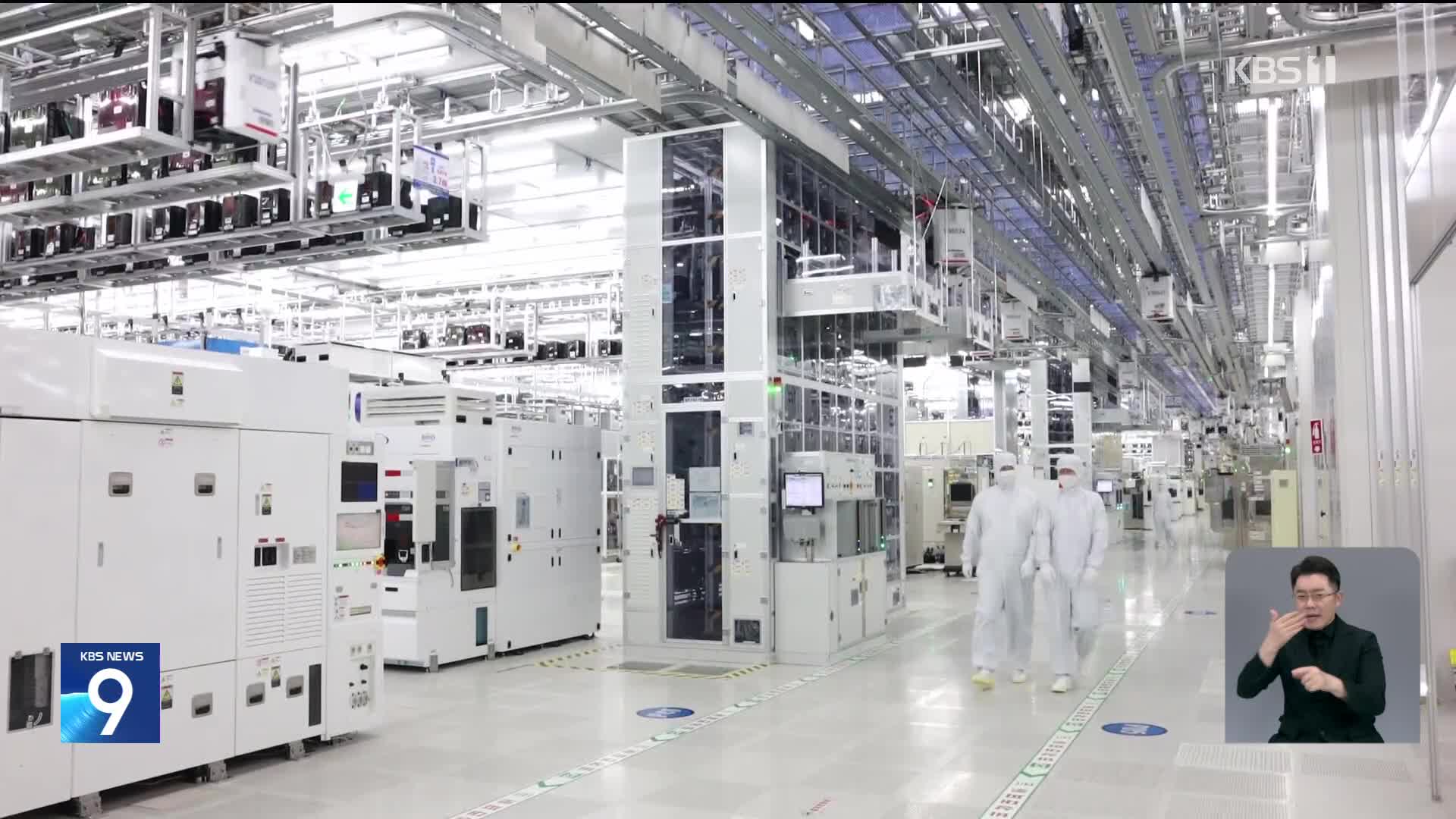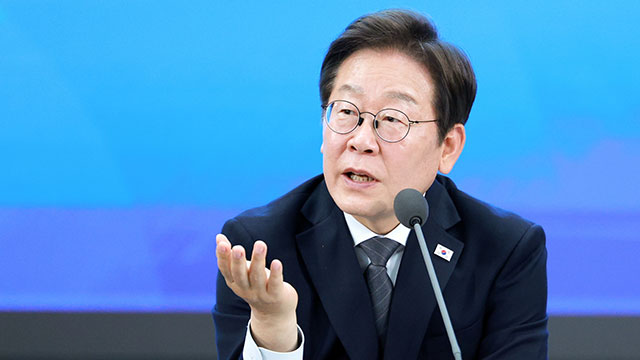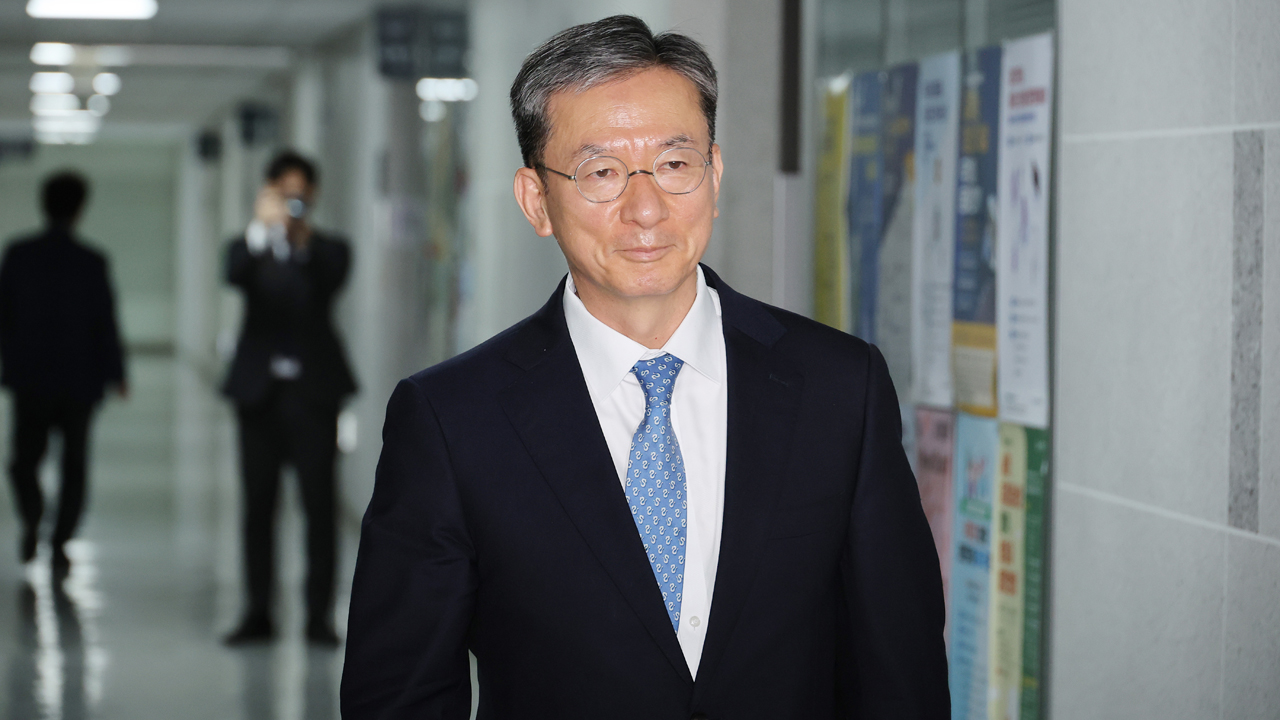Samsung Electronics' semiconductor division reports operating profit below market expectations
입력 2024.11.01 (00:46)
읽어주기 기능은 크롬기반의
브라우저에서만 사용하실 수 있습니다.
[Anchor]
Samsung Electronics has confirmed its third-quarter results, which were significantly impacted by semiconductors.
The semiconductor division recorded an operating profit of around 3 trillion won, falling short of market expectations as it lost its lead in next-generation high-bandwidth memory, HBM.
Lee Do-yoon reports.
[Report]
Samsung Electronics' revenue for the third quarter of this year was 79 trillion won.
This represents an increase of nearly 7% compared to the previous quarter, marking the highest revenue recorded in any quarter to date.
Sales of key products increased, and unit prices also rose, contributing to revenue growth.
However, operating profit decreased by 12% compared to the second quarter, largely due to the disappointing performance of the Device Solutions, the division responsible for the semiconductor business, which fell below initial market expectations.
[Kim Jae-jun/Strategic Marketing Director of Samsung Electronics' Memory Business Division: "The decrease in performance compared to the previous quarter was due to fluctuations in inventory asset valuation, one-time expenses such as incentives, and the impact of currency fluctuations due to the weak dollar."]
Unlike the struggling system and foundry divisions, the memory sector saw a 112% increase in sales compared to the same period last year, driven by rising demand from AI and other sectors, making it the only segment to report positive results in the semiconductor business.
While the market response indicates that they avoided the worst results, the semiconductor division's operating profit margin, which has dropped more than 9 percentage points compared to the second quarter, raises a red flag.
In the third quarter alone, it is at one-third the level of competitor SK Hynix, ultimately due to the impact of high-bandwidth memory HBM.
[Kyeong Hee-gwon/Research Fellow, Korea Institute for Industrial Economics and Trade: "(Samsung Electronics) has managed to sustain its performance with high-value-added products in the memory business, but Hynix is selling even higher-value-added HBM products, widening the gap."]
Samsung Electronics has announced plans to reduce existing product processes and accelerate the transition to high-capacity, high-specification products.
Ultimately, the decision on whether to supply to major client NVIDIA is expected to determine performance, with Samsung projecting that the share of fifth-generation HBM sales will increase to 50% in the upcoming fourth quarter.
This is KBS News, Lee Do-yoon.
Samsung Electronics has confirmed its third-quarter results, which were significantly impacted by semiconductors.
The semiconductor division recorded an operating profit of around 3 trillion won, falling short of market expectations as it lost its lead in next-generation high-bandwidth memory, HBM.
Lee Do-yoon reports.
[Report]
Samsung Electronics' revenue for the third quarter of this year was 79 trillion won.
This represents an increase of nearly 7% compared to the previous quarter, marking the highest revenue recorded in any quarter to date.
Sales of key products increased, and unit prices also rose, contributing to revenue growth.
However, operating profit decreased by 12% compared to the second quarter, largely due to the disappointing performance of the Device Solutions, the division responsible for the semiconductor business, which fell below initial market expectations.
[Kim Jae-jun/Strategic Marketing Director of Samsung Electronics' Memory Business Division: "The decrease in performance compared to the previous quarter was due to fluctuations in inventory asset valuation, one-time expenses such as incentives, and the impact of currency fluctuations due to the weak dollar."]
Unlike the struggling system and foundry divisions, the memory sector saw a 112% increase in sales compared to the same period last year, driven by rising demand from AI and other sectors, making it the only segment to report positive results in the semiconductor business.
While the market response indicates that they avoided the worst results, the semiconductor division's operating profit margin, which has dropped more than 9 percentage points compared to the second quarter, raises a red flag.
In the third quarter alone, it is at one-third the level of competitor SK Hynix, ultimately due to the impact of high-bandwidth memory HBM.
[Kyeong Hee-gwon/Research Fellow, Korea Institute for Industrial Economics and Trade: "(Samsung Electronics) has managed to sustain its performance with high-value-added products in the memory business, but Hynix is selling even higher-value-added HBM products, widening the gap."]
Samsung Electronics has announced plans to reduce existing product processes and accelerate the transition to high-capacity, high-specification products.
Ultimately, the decision on whether to supply to major client NVIDIA is expected to determine performance, with Samsung projecting that the share of fifth-generation HBM sales will increase to 50% in the upcoming fourth quarter.
This is KBS News, Lee Do-yoon.
■ 제보하기
▷ 카카오톡 : 'KBS제보' 검색, 채널 추가
▷ 전화 : 02-781-1234, 4444
▷ 이메일 : kbs1234@kbs.co.kr
▷ 유튜브, 네이버, 카카오에서도 KBS뉴스를 구독해주세요!
- Samsung Electronics' semiconductor division reports operating profit below market expectations
-
- 입력 2024-11-01 00:46:07

[Anchor]
Samsung Electronics has confirmed its third-quarter results, which were significantly impacted by semiconductors.
The semiconductor division recorded an operating profit of around 3 trillion won, falling short of market expectations as it lost its lead in next-generation high-bandwidth memory, HBM.
Lee Do-yoon reports.
[Report]
Samsung Electronics' revenue for the third quarter of this year was 79 trillion won.
This represents an increase of nearly 7% compared to the previous quarter, marking the highest revenue recorded in any quarter to date.
Sales of key products increased, and unit prices also rose, contributing to revenue growth.
However, operating profit decreased by 12% compared to the second quarter, largely due to the disappointing performance of the Device Solutions, the division responsible for the semiconductor business, which fell below initial market expectations.
[Kim Jae-jun/Strategic Marketing Director of Samsung Electronics' Memory Business Division: "The decrease in performance compared to the previous quarter was due to fluctuations in inventory asset valuation, one-time expenses such as incentives, and the impact of currency fluctuations due to the weak dollar."]
Unlike the struggling system and foundry divisions, the memory sector saw a 112% increase in sales compared to the same period last year, driven by rising demand from AI and other sectors, making it the only segment to report positive results in the semiconductor business.
While the market response indicates that they avoided the worst results, the semiconductor division's operating profit margin, which has dropped more than 9 percentage points compared to the second quarter, raises a red flag.
In the third quarter alone, it is at one-third the level of competitor SK Hynix, ultimately due to the impact of high-bandwidth memory HBM.
[Kyeong Hee-gwon/Research Fellow, Korea Institute for Industrial Economics and Trade: "(Samsung Electronics) has managed to sustain its performance with high-value-added products in the memory business, but Hynix is selling even higher-value-added HBM products, widening the gap."]
Samsung Electronics has announced plans to reduce existing product processes and accelerate the transition to high-capacity, high-specification products.
Ultimately, the decision on whether to supply to major client NVIDIA is expected to determine performance, with Samsung projecting that the share of fifth-generation HBM sales will increase to 50% in the upcoming fourth quarter.
This is KBS News, Lee Do-yoon.
Samsung Electronics has confirmed its third-quarter results, which were significantly impacted by semiconductors.
The semiconductor division recorded an operating profit of around 3 trillion won, falling short of market expectations as it lost its lead in next-generation high-bandwidth memory, HBM.
Lee Do-yoon reports.
[Report]
Samsung Electronics' revenue for the third quarter of this year was 79 trillion won.
This represents an increase of nearly 7% compared to the previous quarter, marking the highest revenue recorded in any quarter to date.
Sales of key products increased, and unit prices also rose, contributing to revenue growth.
However, operating profit decreased by 12% compared to the second quarter, largely due to the disappointing performance of the Device Solutions, the division responsible for the semiconductor business, which fell below initial market expectations.
[Kim Jae-jun/Strategic Marketing Director of Samsung Electronics' Memory Business Division: "The decrease in performance compared to the previous quarter was due to fluctuations in inventory asset valuation, one-time expenses such as incentives, and the impact of currency fluctuations due to the weak dollar."]
Unlike the struggling system and foundry divisions, the memory sector saw a 112% increase in sales compared to the same period last year, driven by rising demand from AI and other sectors, making it the only segment to report positive results in the semiconductor business.
While the market response indicates that they avoided the worst results, the semiconductor division's operating profit margin, which has dropped more than 9 percentage points compared to the second quarter, raises a red flag.
In the third quarter alone, it is at one-third the level of competitor SK Hynix, ultimately due to the impact of high-bandwidth memory HBM.
[Kyeong Hee-gwon/Research Fellow, Korea Institute for Industrial Economics and Trade: "(Samsung Electronics) has managed to sustain its performance with high-value-added products in the memory business, but Hynix is selling even higher-value-added HBM products, widening the gap."]
Samsung Electronics has announced plans to reduce existing product processes and accelerate the transition to high-capacity, high-specification products.
Ultimately, the decision on whether to supply to major client NVIDIA is expected to determine performance, with Samsung projecting that the share of fifth-generation HBM sales will increase to 50% in the upcoming fourth quarter.
This is KBS News, Lee Do-yoon.
-
-

이도윤 기자 dobby@kbs.co.kr
이도윤 기자의 기사 모음
-
이 기사가 좋으셨다면
-
좋아요
0
-
응원해요
0
-
후속 원해요
0















이 기사에 대한 의견을 남겨주세요.